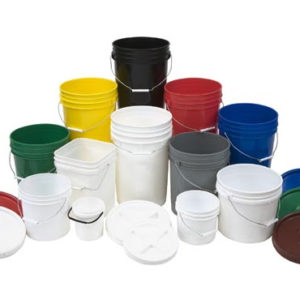It is a factory that produces plastic lubricating containers (with high production quality through the use of high-purity raw materials of PET used in the manufacture of products).

It is a factory that produces plastic lubricating containers (with high production quality through the use of high-purity raw materials of PET used in the manufacture of products), making them safe for food and juice uses. The plastic container manufacturing sector is considered one of the leading sectors due to the high consumption of plastic containers. Therefore, establishing a factory to produce plastic containers is considered a great investment opportunity that achieves high economic returns. The plastic container factory aims to achieve self-sufficiency in plastic containers, employ the workforce, and improve their economic and social standard. Achieving a high level of quality for the factory’s products, and maintaining a competitive price level, enables the project to obtain its target share. It also contributes to covering part of the increasing demand for plastic container products.



The products boast numerous advantages that make them highly valued, as evidenced by the following factors:
Lightweight.
Moldability to suit their intended use.
Resistance to heat and corrosion from acids, alkalis, and solvents.
High demand in many sectors, such as restaurants, cafes, universities, hotels, hypermarkets, and the wholesale and retail sectors.
Important, essential, and indispensable products consumed daily.
Quality.
Competitive price.
Executive summary
Study project services/products
Market Size Analysis
Risk Assessment
Technical study
Financial study
Organizational and administrative study

In 2020, the global plastics market was valued at approximately $579.7 billion. This market is expected to grow to $750.1 billion by 2028, at a compound annual growth rate (CAGR) of 3.4%.
In the GCC region, the plastics industry has experienced significant growth, driven by government efforts to diversify economies and reduce reliance on oil and gas as the primary sources of revenue.
Additionally, rising demand for plastic products in industries such as automotive, packaging, construction, and water piping has contributed to the expansion of this vital sector. A report from the Gulf Petrochemicals and Chemicals Association (GPCA) highlights that plastics represent the second-largest industrial sector in the GCC, with products valued at $108 billion.
For those looking for insights into Saudi Arabia’s plastics industry, Mashro3ak provides the latest key statistics to guide potential investors:
Saudi Arabia accounts for approximately 72% of total plastic production in the GCC, while the GCC region as a whole represents 9% of the global plastics industry.
Saudi Arabia ranks eighth globally in plastic production, holding 2% of the world’s total polymer production.
By the end of Q2 2021, the number of rubber and plastic factories in Saudi Arabia exceeded 222, accounting for 11.9% of all active factories in the country.
According to the Standard International Trade Classification (SITC):
Saudi exports of “plastics in primary forms” were valued at SAR 67,824,000,000, with a total weight of 16,978 tons.
Exports of “plastics in non-primary forms” reached SAR 2,403,000,000, with a total weight of 384 tons.

In Q2 2020, the export value of plastics and rubber products was approximately SAR 13.72 billion. By Q2 2021, this figure had surged to SAR 22.49 billion, reflecting significant growth in exports.
The operational expenses for the production of rubber and plastic products currently exceed SAR 10.1 billion, while total revenue from these activities has reached SAR 20.14 billion.
By 2027, operational expenses for the plastics and rubber manufacturing sector are projected to rise to SAR 20.26 billion, while revenues are expected to increase to SAR 32.47 billion, representing:
An 8% growth rate in operational expenses.
A 5.4% growth rate in total revenues.
Global demand for plastics is expected to triple by 2050, driven by increasing industrial and consumer applications.
In the GCC, per capita plastic consumption has reached approximately 94 kg per year, according to the latest available data.